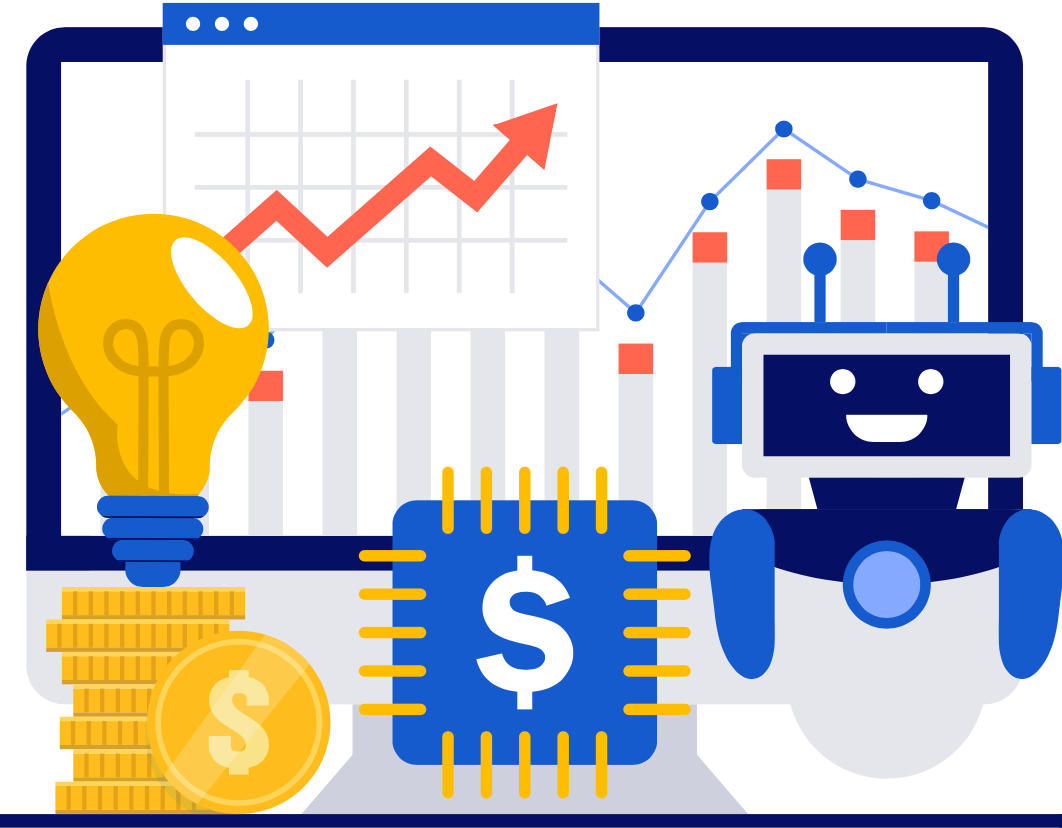Menu
- About Us
- Services
- Industries
- Resources
- Careers
- Contact

Although the ongoing pandemic has forever changed the way we work and do business, solutions such as robotic process automation (RPA) can help businesses, operations, and people adjust more rapidly. The challenge is how to implement RPA in an effective and responsible way in this new age.
Only 39% of executives said that the majority of their workforce capable of working from home did so before COVID-19, according to a PwC executive and workforce survey. That figure jumped to 77% during the pandemic. Despite expectations that the post-pandemic number will settle at around 55%, it’s clear there’s no going back for most businesses. And while earlier blogs show how remote companies can benefit from RPA, there’s still the challenge of responsible implementation right now.
COVID-19 has shown businesses that they must innovate quickly to optimize resources, accelerate company performance, and improve business resilience. But some businesses may be weighing whether to wait for more stable times to implement RPA or whether implementation now will help to stabilize the business in ways that outweigh the challenges. CIOs and CTOs have never been under more pressure to bring down operational costs, streamline work processes, and make the best use of existing resources.
A carefully planned implementation completed in phases for the right processes for automation can provide immediate benefits, such as:
The list can go on, but it’s clear that these issues, when applied in different combinations, can make it more difficult to implement RPA responsibly—meaning implementation of RPA in a cost- and operationally effective way that doesn’t do more harm to the business. It also means doing so in a way that immediately targets challenges that deliver the most impactful outcomes for the business with a clear plan for avoiding RPA optimization challenges.
Working at home will save US employers more than $30 billion a day in what would have otherwise been lost productivity during office closures due to COVID-19 according to Global Workplace Analytics. “Unattended robots” that detach humans from the process or attended robots can prove beneficial in a COVID-19 world where remote workers can leverage both to augment their performance. Equally important is how responsible RPA can deliver sector-specific benefits during the pandemic.
Companies can benefit from RPA in other ways. Besides the numerous repeatable processes across every sector, companies can countermand the challenges caused by COVID-19. Healthcare organizations are dealing with changes in the number of patients being cared for and the amount of data processed administratively. This is true in every area of healthcare from patient intake, care logistics, and supply chain needs to research, billing, and more.
The challenges of more patients and limited onsite personnel has created documentation backlogs with highly repeatable processes such as form completions and database searches across disparate system. Bots can support remote personnel in non-patient-facing roles to complete onsite, repetitive tasks.
Financial organizations are dealing with the financial fallout from COVID-19 with major increases in app-based online banking, defaults, margin pressures, and branch consolidation, among many others. Many contact centers across countless sectors like retail have gone remote with similar surges in online support needs and order fulfillment.
SMBs that have been hard hit by the recession fallout of COVID-19 are struggling to fulfill data- and form-centered tasks with smaller teams and with hiring freezes in place. RPA can effectively support or take over the fulfillment of those low-level repetitive tasks.
This enables onsite and remote employees to focus on sales, marketing, service, and support functions that stabilize and grow the business. The challenge for all these sectors is to responsibly implement RPA in ways that minimize the risks during the COVID-19 era while maximizing the immediate and long-term opportunities.
Responsible RPA implementation is dependent on the avoidance of project failures. This could be ineffective or misaligned bots that take too long and cost too much to implement. To ensure a responsible implementation, your business should start with the following steps:
Establish alignment across departments to help the workforce maintain confidence in their jobs. You will need to show them how RPA will actually save and make their jobs easier so they can focus more on mission-critical processes vital for long-term success.
Create a Center of Excellence (COE) that steers the automation-discovery focus and implementation process that includes best practices for security and IT.
Develop a deep understanding of how existing internal processes that are ideal for RPA can be adapted to benefit a remote workforce before selecting areas to automate. That means also looking at alternative paths such as redesigning workflows or retraining employees.
Focus on matching RPA to both present and longer-term needs via process intelligence development. That enables you to plot the order of process re-engineering, employee-retraining, and automation implementation.
Develop clear plans for integration between RPA bots and other tools, systems, and databases based on business processes that combine human intervention and data manipulation. These interconnected or siloed systems may have deep integration needs across departments and processes. This may result in complex workflow mapping of numerous data formats and applications.
Rather than doing a large-scale implementation, take an iterative approach to RPA based on repeatable and scalable processes. This enables you to plan for bot and process automation growth based on timetables and KPIs.
These steps can all be overwhelming in terms of business and personnel organization, planning, IT/OT support, needs discovery, and more. COVID-19 has put time and financial strains on even the largest enterprises. The result is it has become internally difficult and externally cost prohibitive to implement RPA effectively and responsibly without a skilled implementation partner.
RPA is no silver bullet and is only as effective as the efficient and thorough planning of the discovery and automation flow configuration. The most responsible approach to RPA implementation is to have a skilled RPA implementation partner such as Solugenix that has deep experience with the leading development platform UiPath.
Working with a team that has completed numerous successful RPA bot process discovery, planning, development, and implementation projects across many sectors is the foundation of responsible implementation. The framework that builds on that foundation is collaboration with internal stakeholders and teams on the ground to execute an implementation process that will be successful.
To learn how Solugenix can partner with you for responsible implementation today that brings near-term maximum benefits while laying the groundwork for long-term expansion and growth, click here.
Get the latest insights for business leaders looking to eliminate mistakes and repetitive processes with technology.

These Stories on Robotic Process Automation
Solugenix
Technology & Process for Growth
601 Valencia Ave, Suite 260
Brea, CA 92823
Call us: 1-866-749-7658